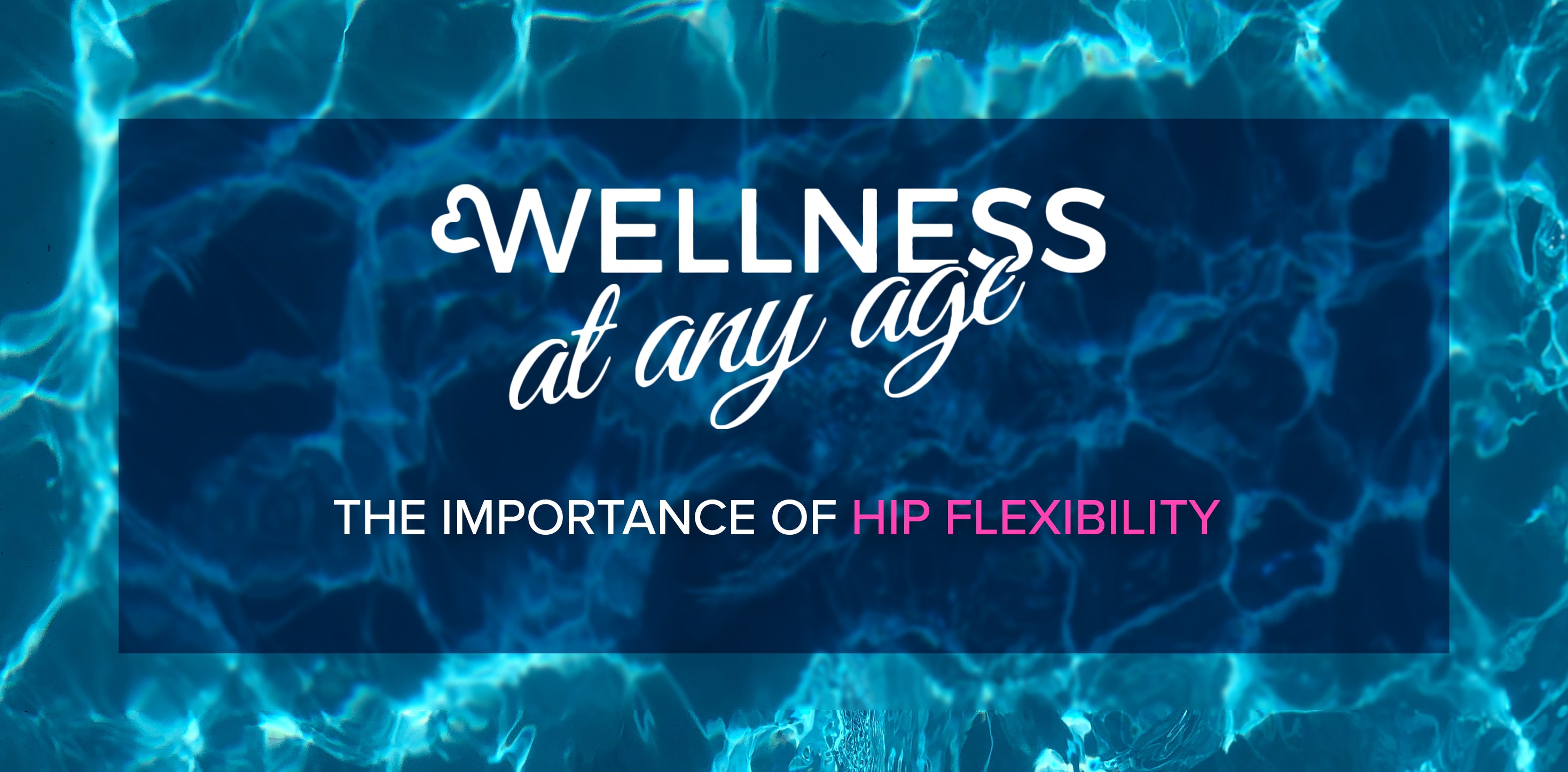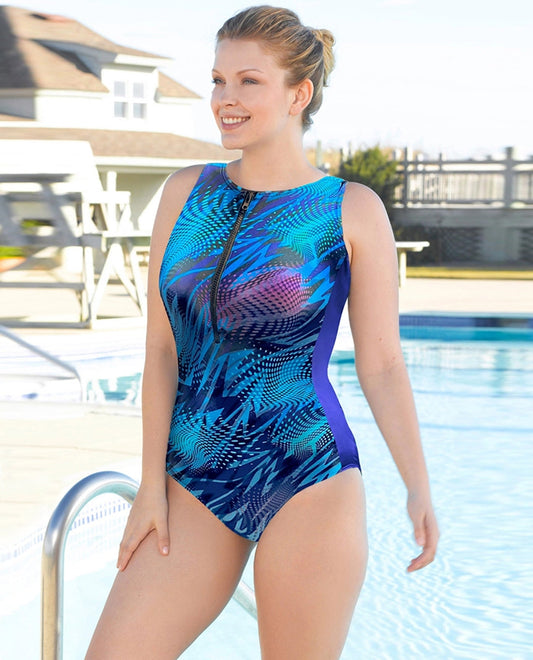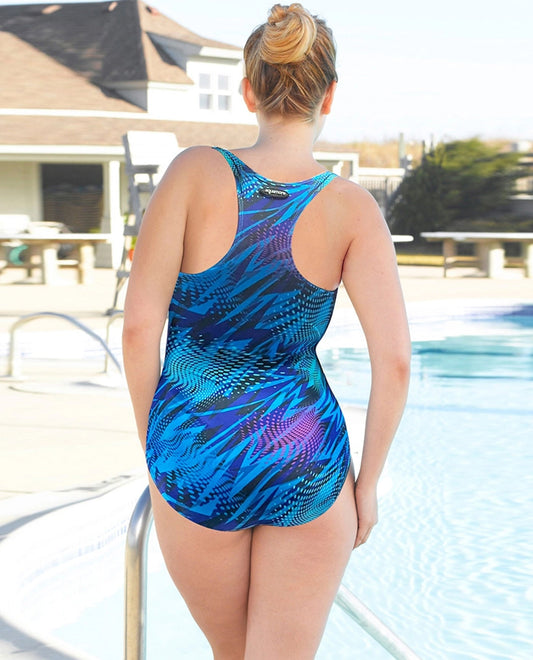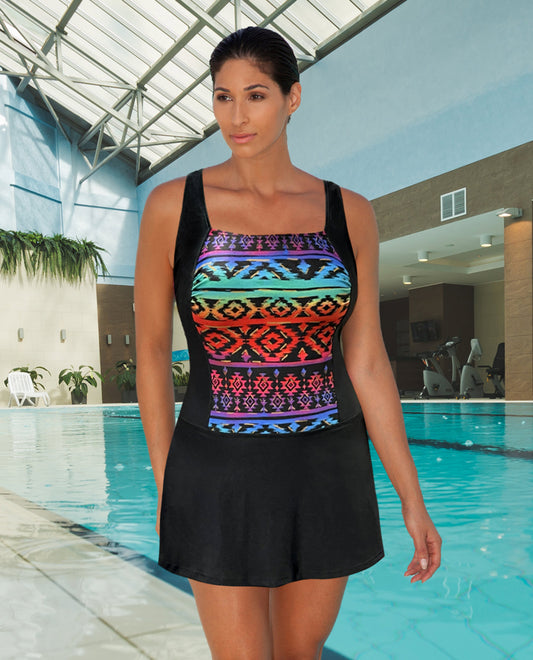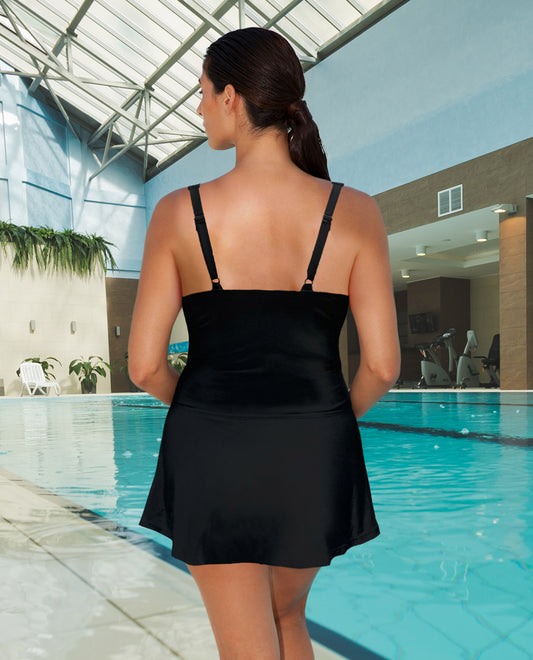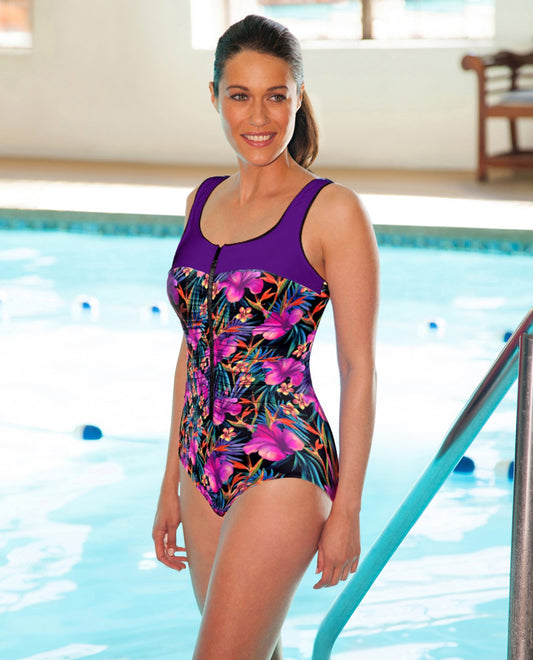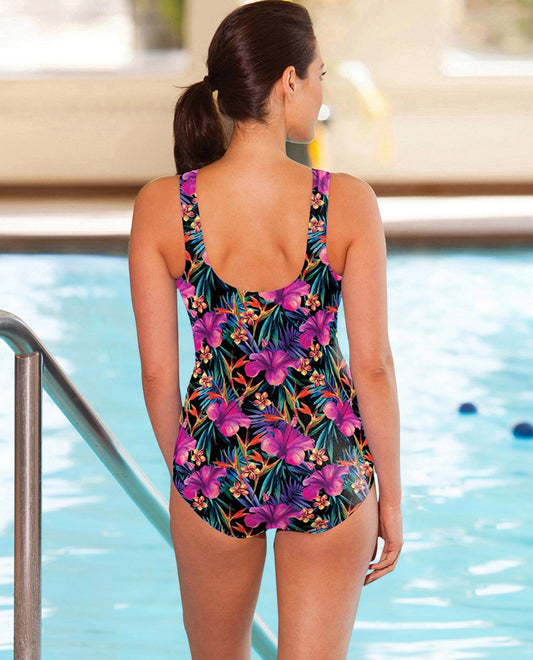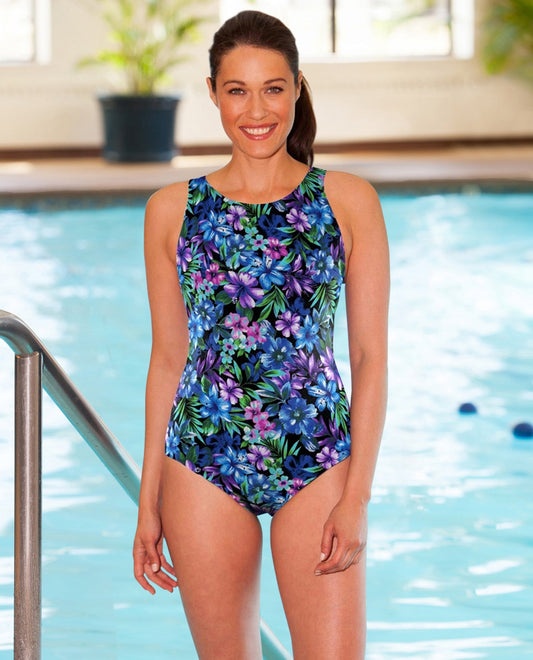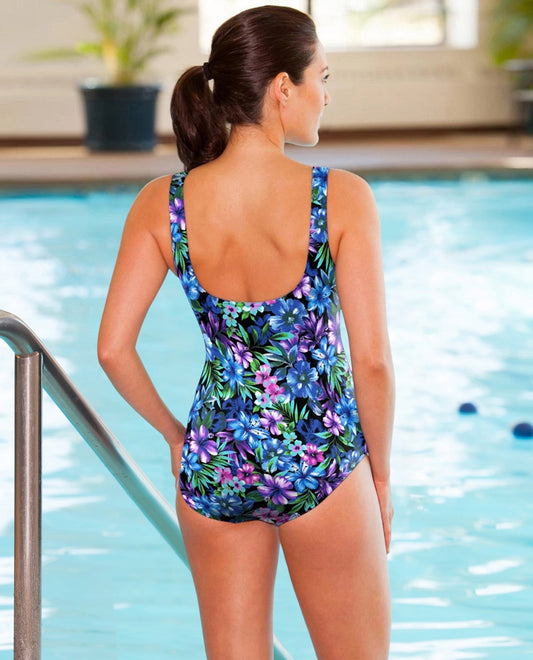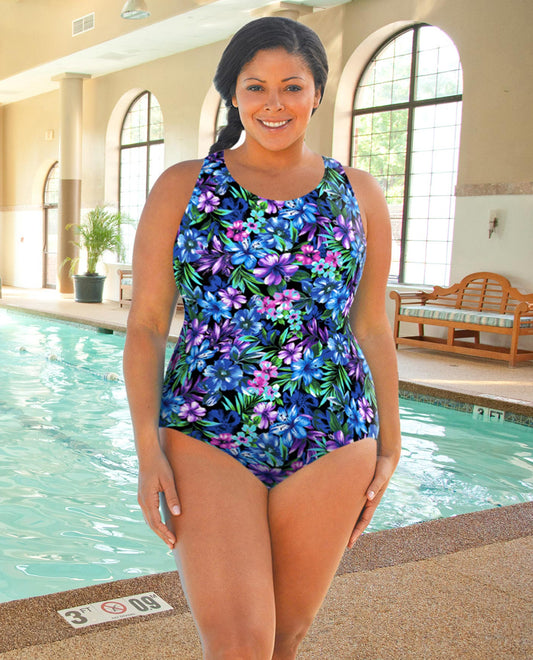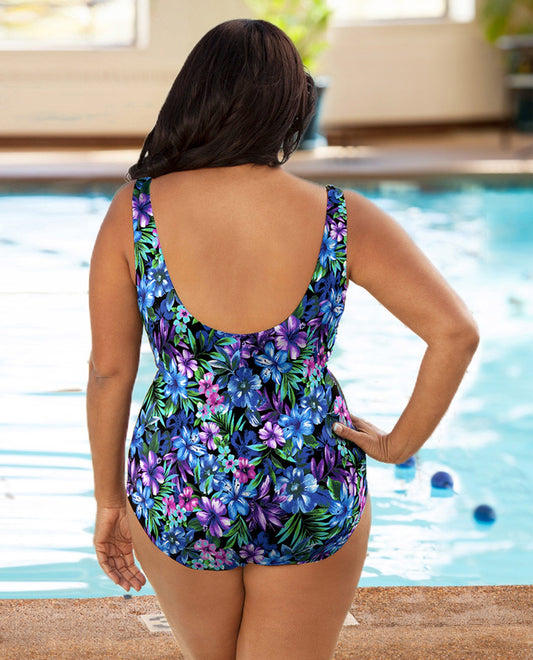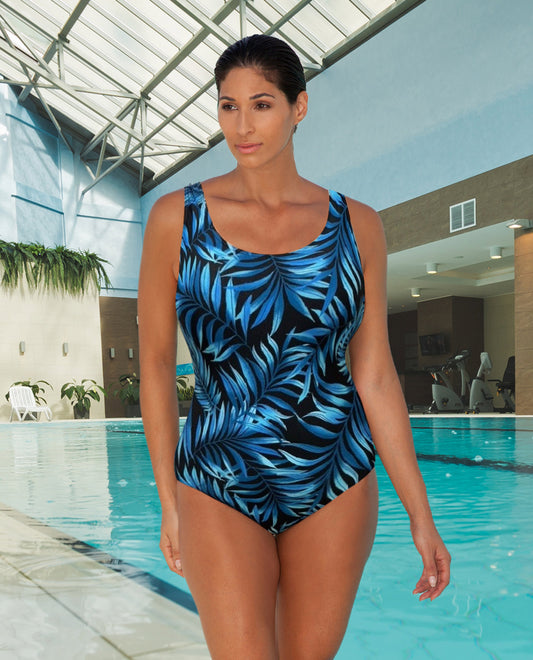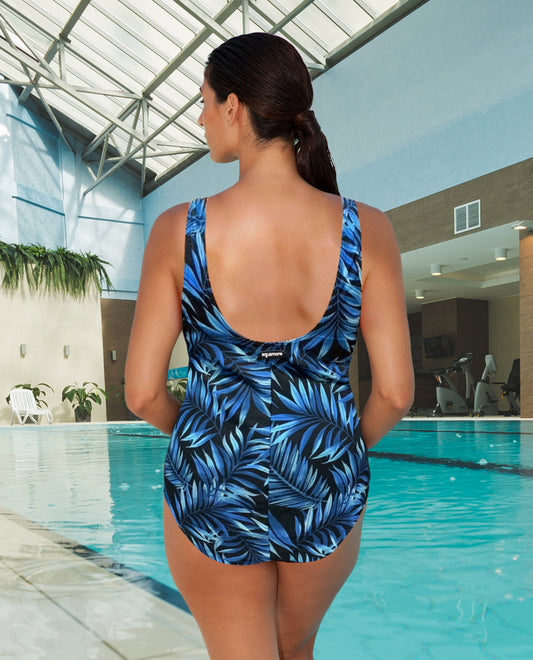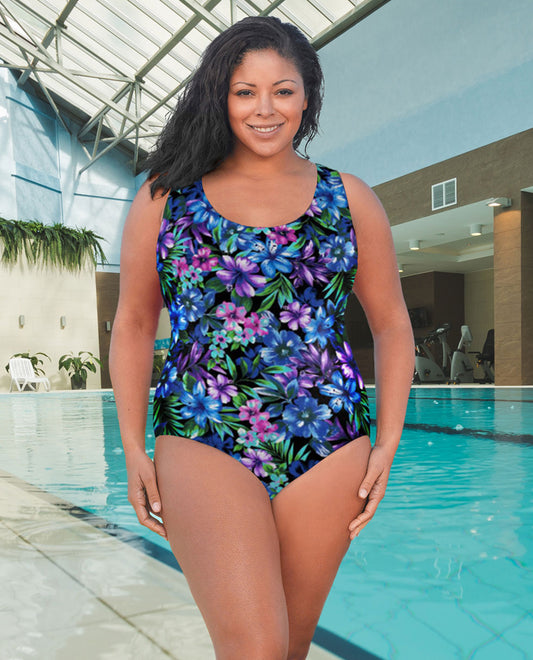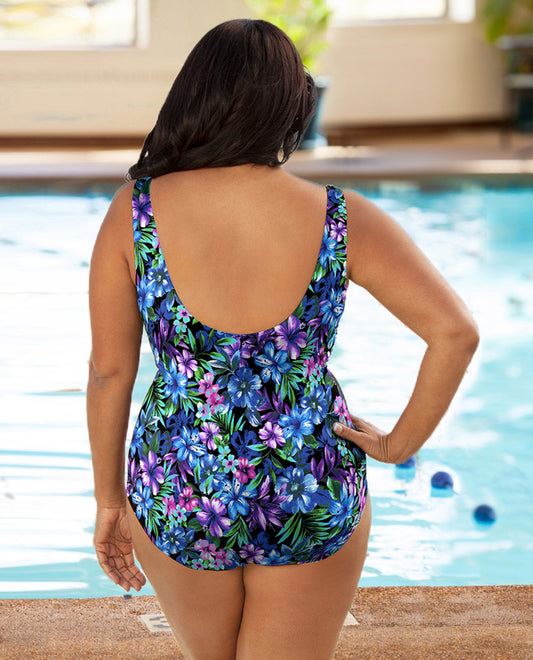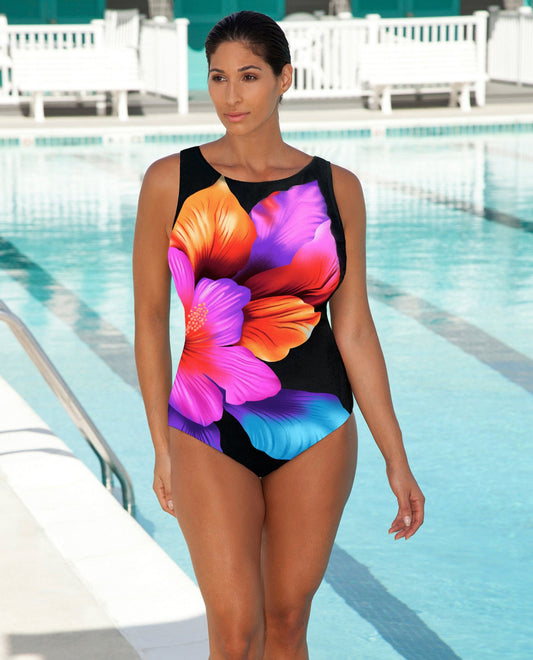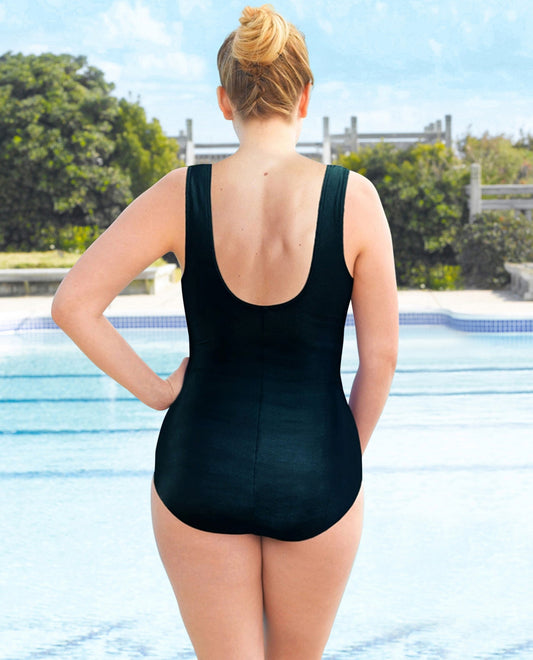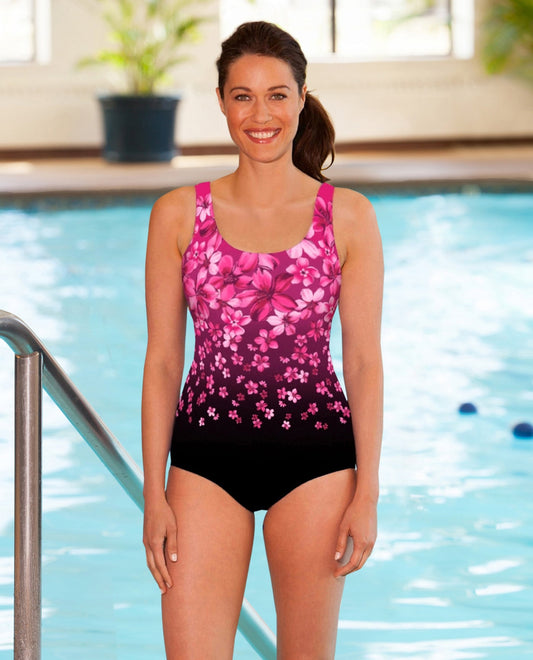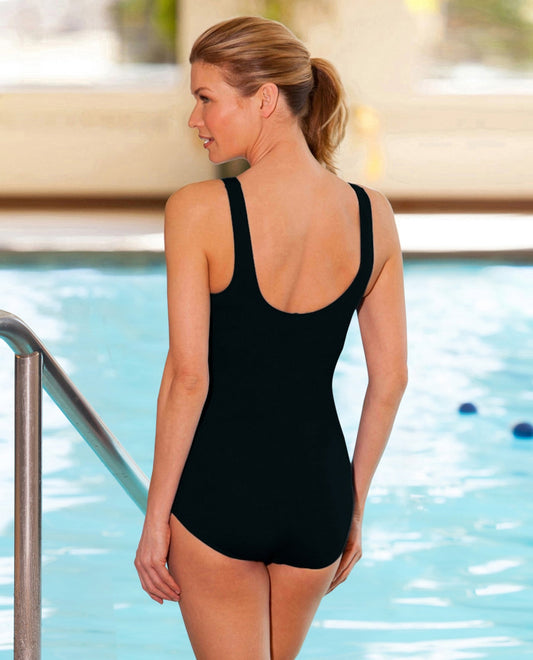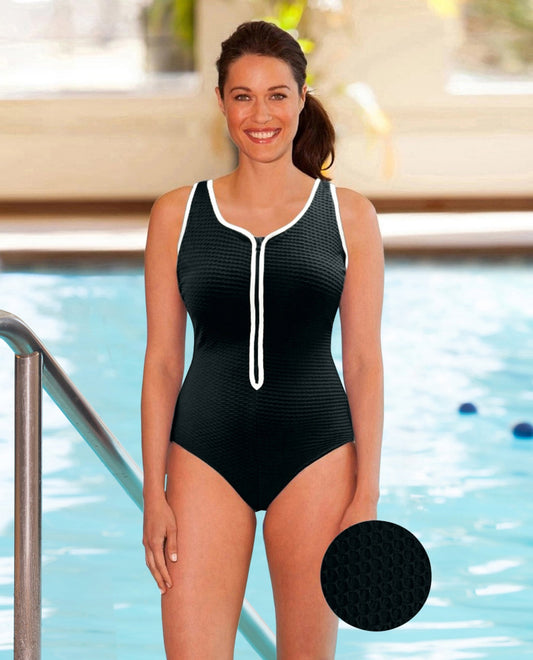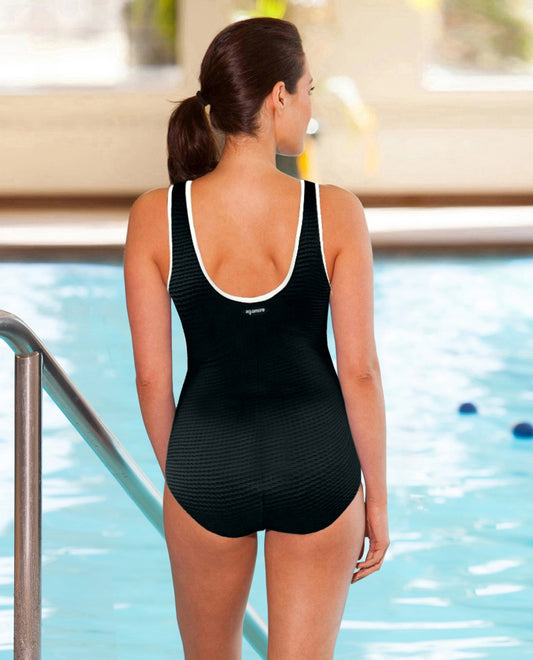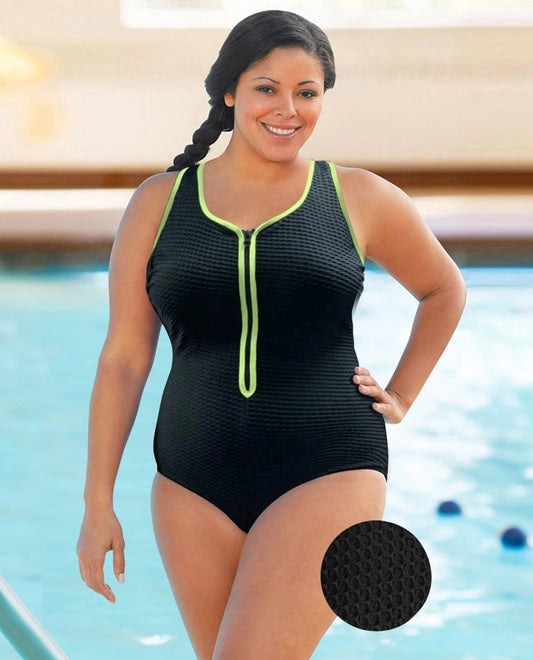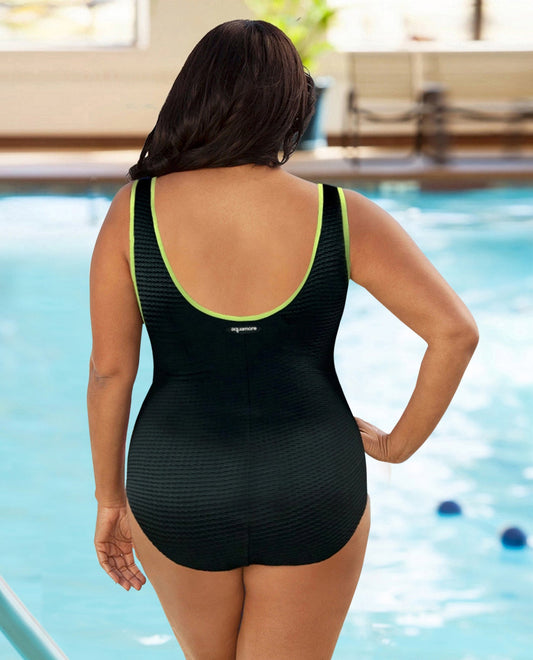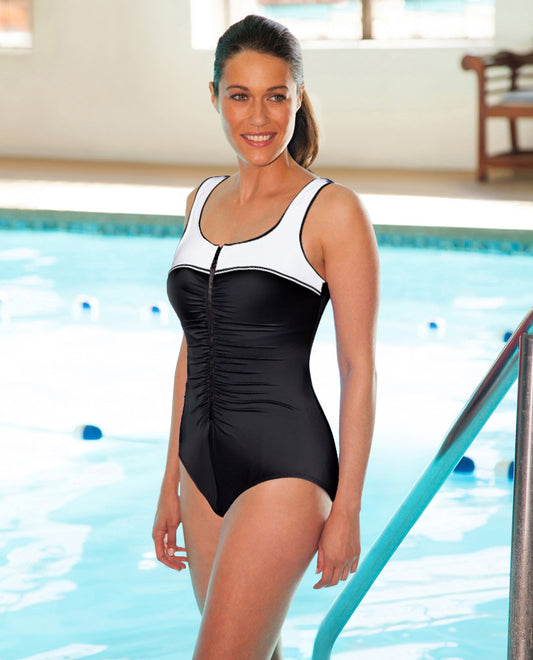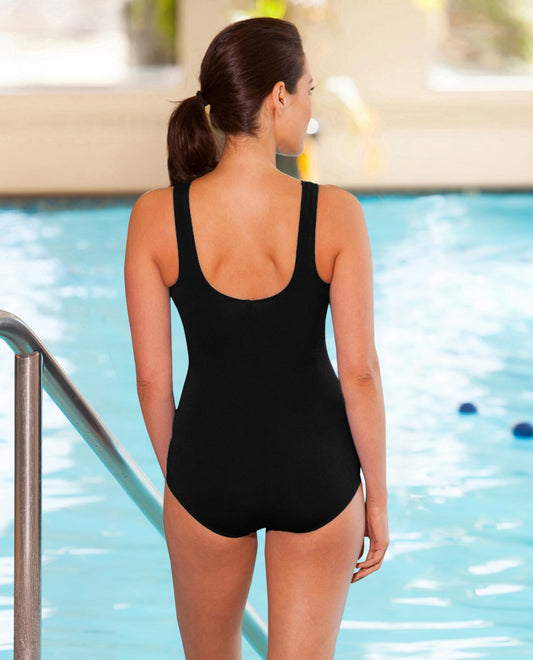HIP MOBILITY AND STRENGTH AQUATIC EXERCISES TO IMPROVE LOW BACK PAIN
Low back pain is a condition that almost every individual will experience at least once during their lifespan. It is the most common cause of job disability in the United States and is also a large contributor to missed workdays. This pathology may be acute or chronic in nature. An acute condition is usually secondary to a traumatic incident, such as falling, or unsuccessfully attempting to lift a heavy object. On the contrary, a chronic condition may be due to repetitive microtrauma overtime, often secondary to poor lifting techniques and body mechanics. However, explicitly in relation to the human body, a structure that is sometimes neglected when addressing low back pain is the hips. Hip mobility, flexibility, and strength each play a vital role in maintaining a healthy low back.
The hip joint is one of the largest stabilizing joints in the human body. It is where the thigh bone, known as the femur, meets the pelvis to form a ball-and-socket joint. It not only has a large amount of mobility, but it also has a lot of stability. It plays a large role in transferring energy as we walk or run, balances us when we are on uneven surfaces, and generates force, such as kicking a soccer ball. There are a vast number of muscles that attach to the hip joint, including our gluteal muscles, adductor muscles (located on the inside of our thigh, our quadriceps, and our hamstrings.
Decreased hip flexibility and strength are two impairments that are highly correlated with low back pain. As individuals age, we tend to develop more sedentary habits. This results in the muscles that attach to the hip becoming not only weak, but also tight. For example, the iliopsoas is a large hip flexor in the body. Its muscle fibers originate from the low back vertebrae and attach to the top, middle portion of the hip. When we sit for long periods of time, that muscle becomes shortened. If prolonged shortening occurs, it results in a term known as adaptive shortening. The muscle will begin to pull on the low back, creating more stress on the area. This may lead to increased pain in the back, a decreased ability to flex our hips when walking, and an overall decrease in mobility. Moreover, if the hips are weak, it can lead to low back injury, as other muscles around the hip will have to work harder to compensate.
Another common ailment in elderly individuals related to the hip joint is osteoarthritis. Hip osteoarthritis may be due to placing a large amount of stress through the hip joint without optimal force production and stability of the hip’s surrounding structures. Some of the first signs and symptoms of hip osteoarthritis is pain in the front of the hip that may radiate to the groin area, pain with squatting, and decreased motion of the hip joint. If this disease process advances towards the end stage, individuals may need to have a hip replacement. There are many ways individuals can defer the negative effects of osteoarthritis, or even avoid it entirely, with one of the best solutions being aquatic exercise.
Exercising in the water can allow individuals with low back pain, hip pain, or a combination of both to move more easily and with less symptom provocation. Below are some exercises that individuals may perform in an aquatic setting to not only improve the mobility and strength of their hips, but also decrease low back pain.
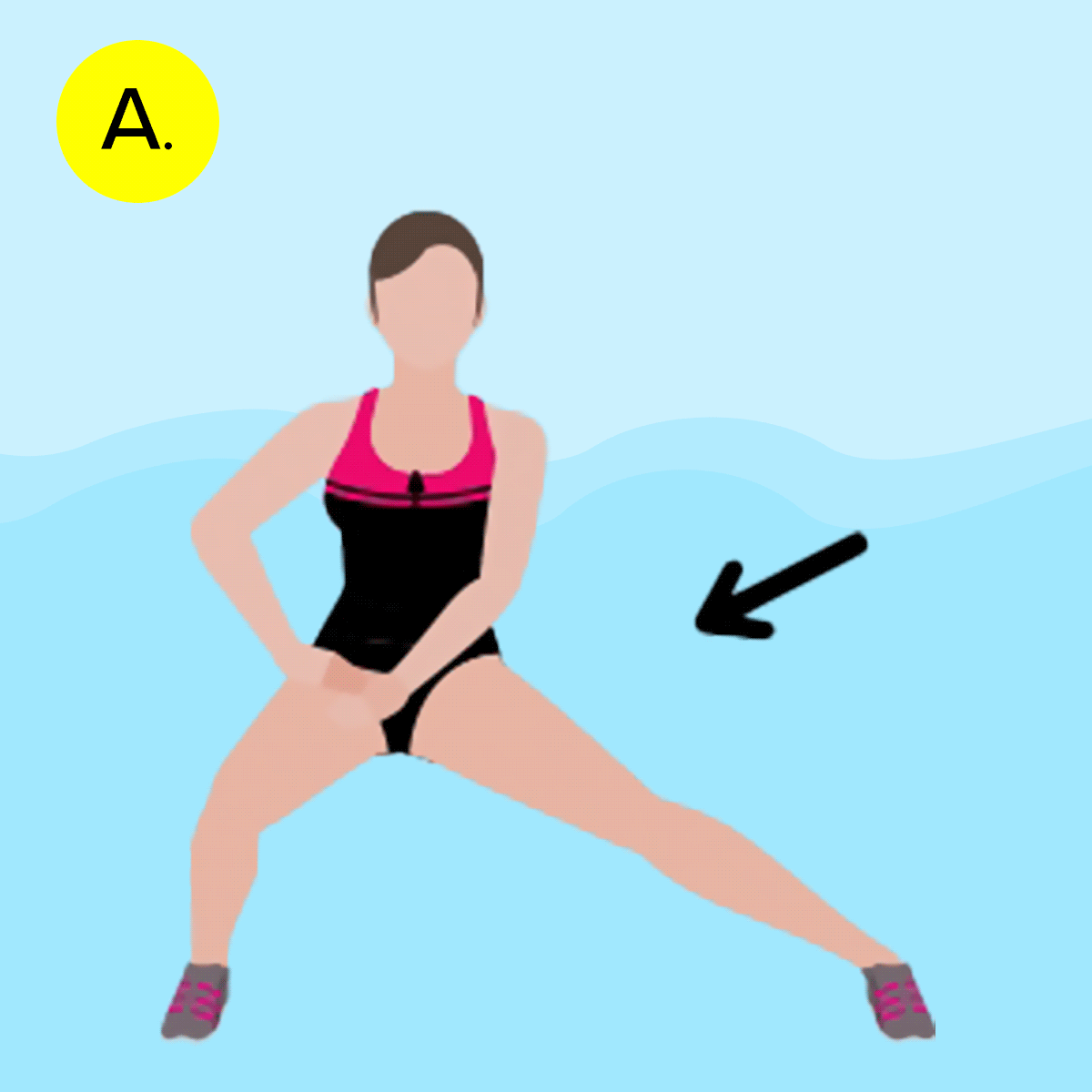

SIDE LUNGE HIP STRETCH
HOLD THIS POSITION FOR 30 SECONDS
REPEAT FOR 5 REPETITIONS AND THEN PERFORM WITH THE OTHER LEG
PERFORM 2-3 ROUNDS OF THIS EXERCISE
The focus of this exercise is flexibility. Take one big step with one foot out to the side. Try to keep both toes pointed forward rather than in an outward position. Once the big step has been taken, slowly shift your weight towards the side that you stepped out with. As you shift your weight, you will begin to feel a stretch on the inside of your thigh. This is stretching the adductor muscles that attach to the hip.
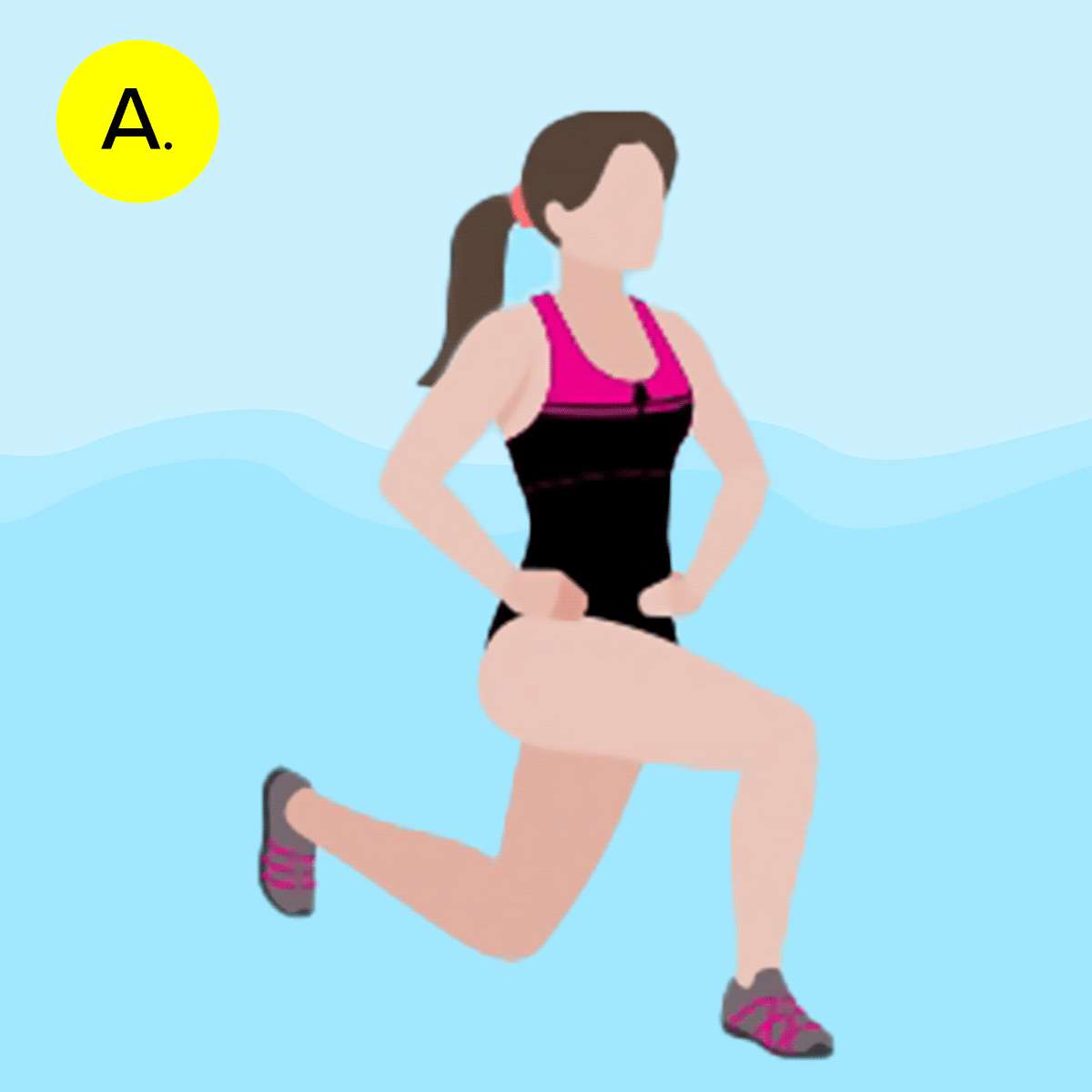

FORWARD LUNGE HIP STRETCH
HOLD THIS POSITION FOR 30 SECONDS
REPEAT 5 REPETITIONS AND THEN PERFORM WITH THE OTHER LEG
PERFORM 2-3 ROUNDS OF THIS EXERCISE
The focus of this exercise is flexibility. This is like the previous exercise, but this time, the step (lunge) will be taken in the forward direction. To enhance this stretch, if you have the ability in the shallow end of a pool, place the opposite foot that is not stepping forward on the edge of a step. When you step forward, slowly shift your weight forward. You will begin to feel a stretch in the front of the hip that you did not step forward with. This is stretching the hip flexor muscle.
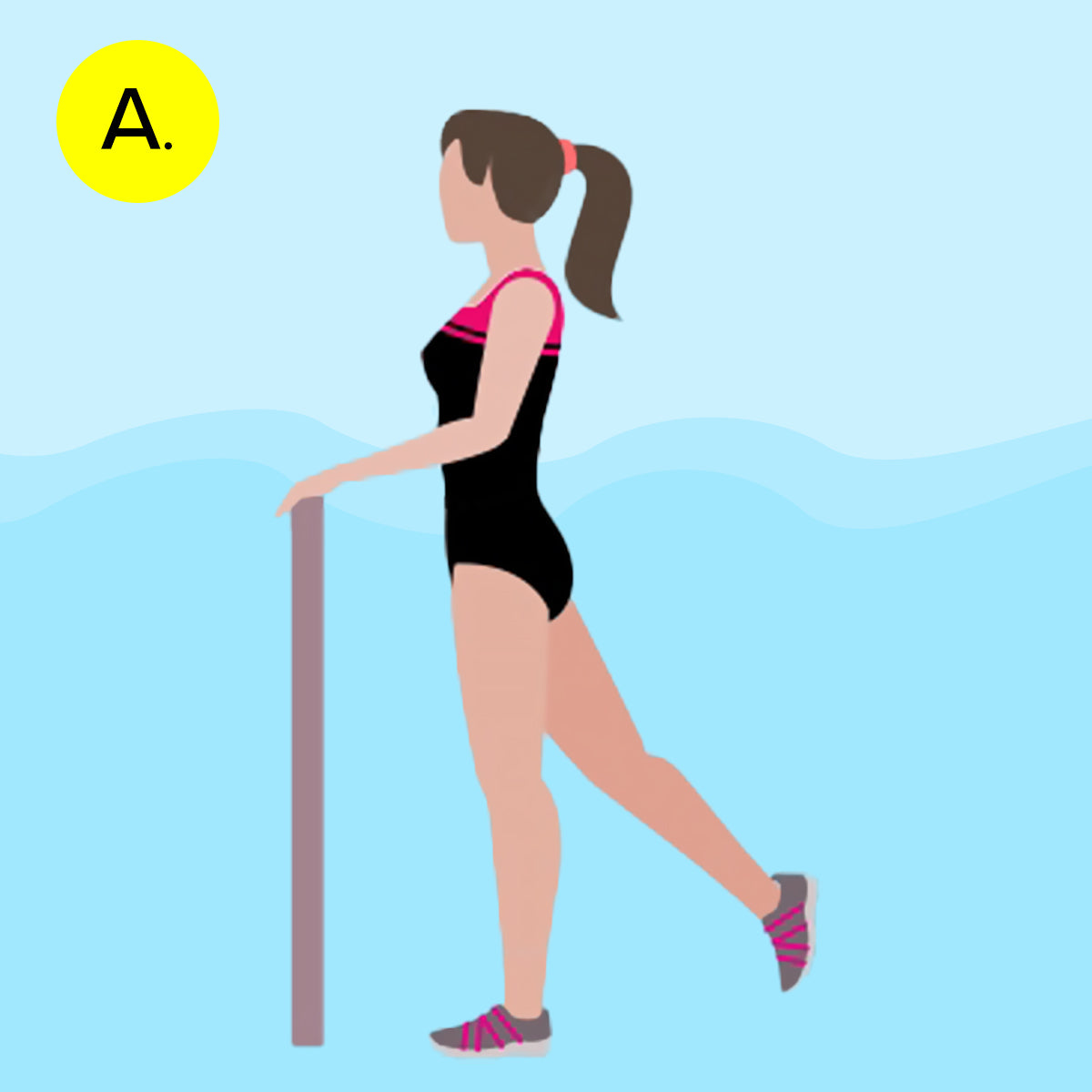

STANDING HIP EXTENSION
PERFORM 30 REPETITIONS FOR EACH LEG
PERFORM 3 SETS FOR EACH LEG
The focus of this exercise is strength. Starting with your body upright, begin to engage your core muscles. If you need a review, visit the core exercise aquatic article! Once your core is engaged, extend one of your legs in a backwards direction, keeping the entire leg straight. You should think about trying to engage your gluteal muscle, located in the buttock region. This muscle group is the primary mover responsible for extending the hip. Moving through the water will provide natural resistance. Try to avoid leaning with your trunk to gain more motion. This exercise will also be challenging the leg you are standing on in order to stabilize the hip joint. If this begins to get easy and is not challenging you, you may begin to add ankle cuff weights if they are available to you.
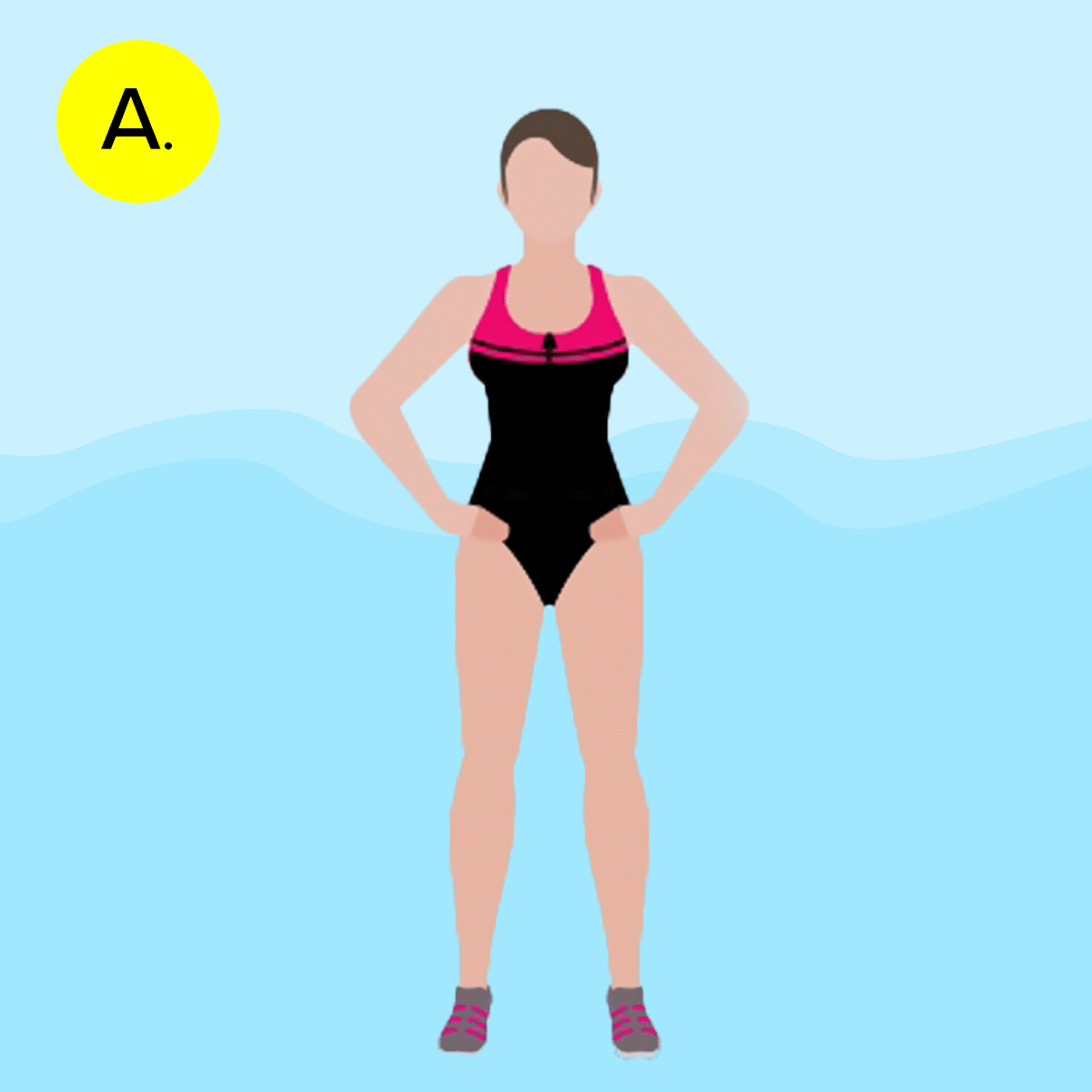

STANDING HIP ABDUCTION
PERFORM 30 REPETITIONS FOR EACH LEG
PERFORM 3 SETS FOR EACH LEG
The focus of this exercise is strength. You are in a similar starting position to the hip extension exercise. This exercise is going to work more on the gluteus medius and minimus muscles, which are very important for hip stability! Abduction is when you are moving a limb “away from the body”. To perform this exercise, move one of your legs away from your midline, keeping the entire leg straight. You will feel the muscle engaging on the outside of your hips. Try to avoid leaning with your trunk to gain more motion. This exercise will also be challenging the leg you are standing on to stabilize the hip joint. If this begins to get easy and is not challenging you, you may begin to add ankle cuff weights if they are available to you.
